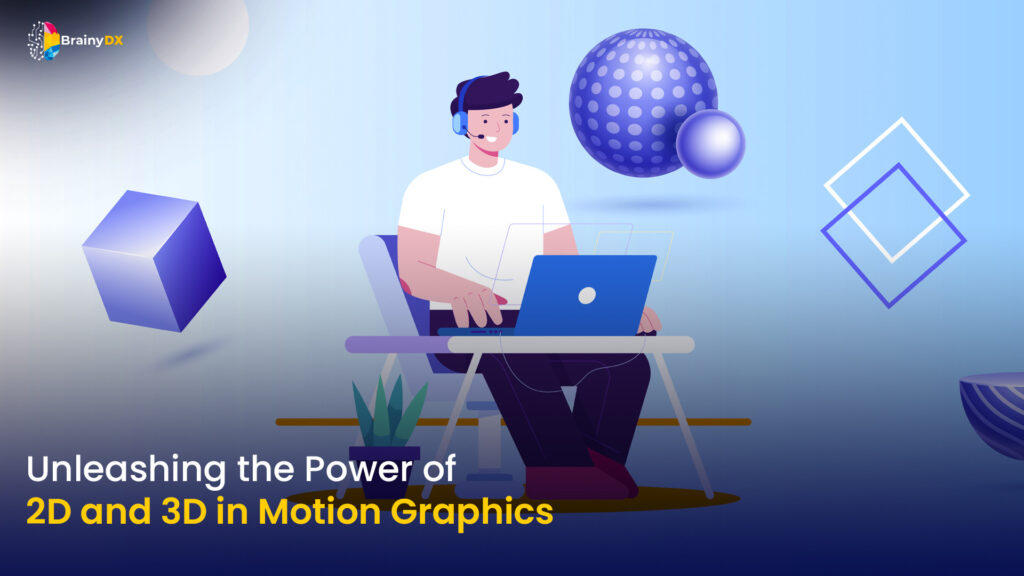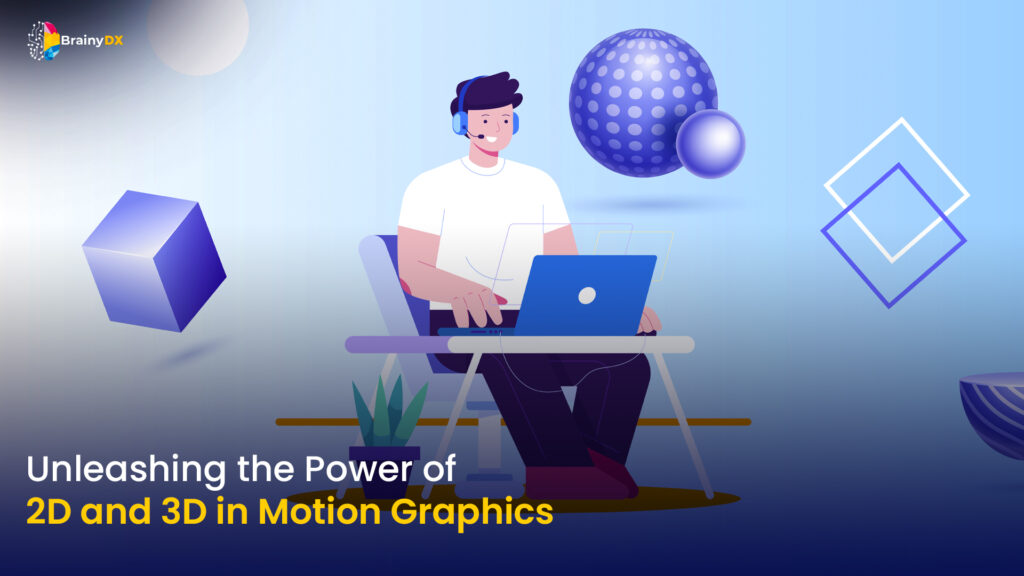
Unleashing the Power of 2D and 3D in Motion Graphics
Unveiling the Power of Color: How BrainyDx Optimizes Your User Interface


Motion graphics can make still images come alive and turn them into interesting stories and interactive experiences. But deciding between 2D and 3D animation can be tricky.
2D and 3D each have their own strengths and visual styles. The best choice depends on what you want to achieve with your project.
This blog post will explain the differences between 2D and 3D animation in motion graphics. It will help you decide which one is right for you by discussing what makes them different, their pros and cons, and the types of projects where each one works best.
A World in Two Dimensions: Exploring 2D Animation
Ever wonder how cartoons come to life? That’s 2D animation! It’s like magic for pictures. Artists create a bunch of drawings, one slightly different from the next. When these drawings are shown quickly one after another, it makes the pictures seem like they’re moving!
Remember your favorite childhood cartoons? Those are all examples of 2D animation. It can be hand-drawn, like the classic Disney movie “The Lion King,” or created on computers, like the popular show “Avatar: The Last Airbender.”
How it Works: Think of it like a flip book – those things with pages that show a little change each time you flip. 2D animation is like a super cool flip book that comes to life on a screen.
Today, computers help make this process easier. Programs like Adobe Animate let artists draw things on the computer and then move them a little bit in each picture, creating the illusion of movement.
Strengths of 2D Animation:
- Eye-catching Styles: 2D animation can be anything you want it to be! From playful hand-drawn characters to clean and modern flat designs, it can bring your creative ideas to life in a way that’s perfect for you.
- Tells Stories in a Big Way: 2D animation lets you go beyond just showing things realistically. By making characters and scenes more expressive, it helps you tell your story in a fun and engaging way.
- Fast and Affordable: Compared to 3D animation, 2D projects are usually cheaper and faster to create. This makes it a great choice for explainer videos, infographics, and social media posts you need done quickly.
Things to Consider:
- Limited Depth Perception: Inherently, 2D animation lacks the depth and dimensionality of 3D. While it excels at conveying concepts and emotions, it might not be ideal for showcasing complex products or technical processes.
- Animation Style: Choosing a 2D style requires careful consideration. A hand-drawn aesthetic evokes a nostalgic feel, while a clean, vector-based style offers a modern touch.
Stepping into the Third Dimension: Unveiling 3D Animation
Betweeb 2D and 3D, 3D animation delves into the world of virtual spaces. It involves creating 3D models of characters, objects, and environments, which are then animated within a computer software program. This allows for realistic visuals and dynamic camera movements. Think of the breathtaking landscapes of “Avatar” or the heart-stopping action sequences in “The Incredibles.”
How it Works:
3D animation utilizes specialized software like Maya or Blender. Artists create 3D models, define virtual skeletons for movement (rigging), and apply textures and lighting to bring the models to life within a digital environment.
Strengths of 3D Animation:
- Hyper-realism and Immersion: It excels at creating lifelike visuals. It allows for intricate details, realistic textures, and dynamic camera movements, fostering a sense of immersion for the viewer.
- Versatility in Applications: It is well-suited for a wide range of projects, from product demos and architectural visualizations to medical simulations and character-driven narratives.
- Scalability and Flexibility: Once a 3D model is created, it can be easily manipulated and reused in different scenes or projects, saving time and resources.
Things to Consider:
- Technical Expertise and Resources: It requires a steeper learning curve and specialized software, potentially leading to higher production costs.
- Rendering Time: Creating smooth, realistic 3D animation often involves lengthy rendering times, which can impact project timelines.
Choosing the Right Tool for the Job: When to Use 2D and 3D Animation
Here’s a breakdown to help you decide between 2D and 3D animation styles, and which animation aligns best with your project:
- 2D Animation is Ideal For:
- Explainer videos and infographics
- Character-driven stories with a focus on emotion and expression
- Short marketing videos and social media content
- Projects with limited budgets and tight deadlines
- When a unique, stylized visual approach is desired
- 3D Animation is Ideal For:
- Product demonstrations and architectural visualizations
- Realistic simulations and medical animations
- Complex narratives with intricate environments and characters
- Projects requiring a high degree of visual detail and realism
- When showcasing products or concepts from multiple angles is necessary
The Power of Fusion: Combining 2D and 3D Animation
The animation landscape isn’t limited to a strict 2D and 3D dichotomy. The beauty lies in the power of combining these two techniques to achieve a truly unique and impactful visual experience. Here’s how:
- 2D Overlays on 3D Environments: Imagine a sleek, 3D product animation with vibrant 2D call-to-action buttons or text overlays. This approach leverages the strengths of 3D for product realism while incorporating the flexibility and style of 2D graphics for user interaction.
- 2D Characters in 3D Worlds: A charming, hand-drawn character navigating a meticulously crafted 3D environment creates a visually captivating contrast. This blend injects personality and warmth into a realistic setting.
- Flat Design Elements with 3D Objects: Merging flat design elements like icons and infographics with 3D objects can create a visually engaging and informative presentation. This approach is often used in explainer videos and marketing materials.
The Art of 2D and 3D Motion Graphics: Beyond Style
While the choice between 2D and 3D animation is crucial, it’s just one piece of the motion graphics puzzle. Here are some additional factors to consider for a successful project:
- Concept and Storytelling : A strong concept is the foundation of any engaging motion graphics project. Whether it’s a product explainer or a social media ad, a clear narrative structure will guide the animation and resonate with viewers.
- Motion Design Principles: Animation principles like timing, anticipation, follow-through, and squash and stretch breathe life into your visuals. Mastering these principles ensures smooth, believable movement that enhances the storytelling.
- Sound Design and Music: The right audio components can elevate your motion graphics project to new heights. Well-placed sound effects and a captivating soundtrack add emotional depth and immersion.
Conclusion: The Perfect Blend Awaits
The world of motion graphics is a playground of creativity. By understanding the strengths and limitations of 2D and 3D animation, along with a focus on strong storytelling and design principles, you can craft impactful visuals that captivate your audience. So, unleash your imagination, explore the possibilities, and bring your vision to life with 2D and 3D animation, one frame at a time.


